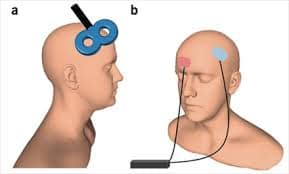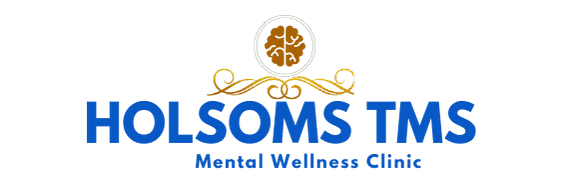Introduction to TMS Non-Invasive Magnetic Brain Stimulation

Modern mental health care is undergoing a quiet revolution, and one of its most powerful tools is TMS, non-invasive magnetic brain stimulation. Without medication, without surgery, and without downtime, this cutting-edge treatment is offering hope to individuals who’ve struggled for years with conditions like depression, anxiety, OCD, and more.
But what exactly is TMS, and why are so many turning to it as an alternative to traditional therapy? As we’ll explore in this article, TMS, non-invasive magnetic brain stimulation, is not only backed by science but is also gaining traction globally for its remarkable ability to reawaken the brain’s natural healing mechanisms. Whether you’re searching for answers for yourself or someone you love, this guide will help you understand everything you need to know about this transformative therapy—from how it works to who it helps, what to expect, and why it might be the most important decision you ever make for your mental health.
How TMS Non-Invasive Magnetic Brain Stimulation Works
TMS uses a magnetic coil placed gently on your scalp to send short, painless magnetic pulses to specific areas of your brain. These pulses target regions responsible for mood control, especially the prefrontal cortex, which is often underactive in patients with depression.
Here’s how the process works:
- Targeting: The provider maps your brain to find the right area for stimulation.
- Pulse Delivery: Magnetic pulses stimulate nerve activity, encouraging better communication between brain cells.
- Session Duration: Each treatment lasts about 20 to 40 minutes, five days a week, for four to six weeks.
Unlike treatments that affect the entire body, TMS focuses precisely where it’s needed, enhancing safety and minimizing side effects.
Benefits of TMS Non-Invasive Magnetic Brain Stimulation Over Traditional Methods
One of the main advantages of TMS, non-invasive magnetic brain stimulation, is that it avoids the complications associated with medication. Common benefits include:
- Non-systemic: No impact on liver, kidneys, or hormonal balance.
- Minimal side effects: No weight gain, drowsiness, or dependency.
- Long-term relief: Effects can last months or even years.
- High success rate: Many experience significant symptom reduction, especially in treatment-resistant cases.
- Outpatient care: No hospitalization, recovery, or downtime.
This makes TMS an appealing option for individuals seeking a holistic, low-risk alternative to pharmaceuticals or electroshock therapy.
Conditions Treated With TMS Non-Invasive Magnetic Brain Stimulation
Initially approved for Major Depressive Disorder (MDD), the application of TMS now extends to several conditions, including:
- Obsessive-Compulsive Disorder (OCD)
- Post-Traumatic Stress Disorder (PTSD)
- Generalized Anxiety Disorder (GAD)
- Migraines and chronic pain
- Smoking cessation and addiction cravings
Researchers are also exploring TMS for conditions like autism, tinnitus, Alzheimer’s, and fibromyalgia.
TMS Non-Invasive Magnetic Brain Stimulation vs Electroconvulsive Therapy (ECT)
| Feature | TMS Therapy | ECT (Electroconvulsive Therapy) |
| Invasiveness | Non-invasive | Requires anesthesia and muscle relaxants |
| Memory Loss Risk | None reported | Common side effects |
| Time Commitment | 4–6 weeks, outpatient | Usually an inpatient or monitored facility |
| Recovery Time | None | Requires rest and monitoring |
| Patient Comfort | High—no sedation or downtime | Lower—associated with significant side effects |
TMS non-invasive magnetic brain stimulation provides a safer, more patient-friendly experience compared to traditional ECT.
Is TMS Non-Invasive Magnetic Brain Stimulation Safe for Everyone?
TMS is safe for most adults aged 18 to 70. It’s especially suited for those who:
- Have failed to respond to at least one antidepressant
- Prefer drug-free therapies
- Are not candidates for invasive procedures
Not recommended for:
- Individuals with a history of seizures
- Patients with implanted medical devices (e.g., pacemakers)
- People with metal in their skull or facial area
A full psychiatric and medical screening ensures safety and suitability before starting.
What Happens During a TMS Session?
A typical session is simple and relaxing:
- You’re seated in a recliner while the technician places the magnetic coil.
- You’ll hear clicking or tapping sounds as pulses are delivered.
- There’s no need for sedation or recovery time.
Most patients feel a mild tapping or tickling sensation. Sessions are done daily (Monday to Friday), with each one lasting under an hour.
Potential Side Effects and Risk Factors
Most patients tolerate TMS very well. Common side effects include:
- Mild headaches
- Scalp discomfort
- Temporary jaw twitching
Rare complications like seizures are extremely uncommon (less than 0.1%). All TMS providers are trained to follow FDA safety protocols, minimizing any risks involved.
Clinical Evidence Supporting TMS Non-Invasive Magnetic Brain Stimulation
Backed by years of research, TMS has shown strong evidence of effectiveness:
- Over 60% of patients report significant improvement in depression symptoms
- Up to 30–40% achieve full remission
- Long-term studies confirm benefits can last beyond one year
Numerous global health authorities, including the FDA, NICE (UK), and Health Canada, endorse TMS therapy for specific mental health disorders.
Myths and Misconceptions About TMS
| Myth | Truth |
| TMS is painful | It may cause slight discomfort, but it’s not painful |
| It’s the same as shock therapy | TMS is magnetic, not electrical—no shocks involved |
| TMS changes your personality | It restores natural brain function, not who you are |
| It’s a last resort treatment | TMS is now being recommended earlier in treatment plans |
Understanding these truths can help more people access the care they need without fear.
Technological Advances in TMS Devices
Technology is evolving rapidly. Exciting innovations include:
- Deep TMS: Reaches deeper brain areas with specialized coils
- Accelerated TMS: Multiple sessions per day for quicker results
- AI-assisted targeting: Customized brain maps to maximize success
- Wearable prototypes: Under development for future home use
These breakthroughs promise even greater precision and accessibility in the years ahead.
Pediatric and Senior Applications of TMS
While most TMS studies focus on adults, trials for younger and older groups are expanding.
- Teens (12–17): Early studies show positive outcomes for treatment-resistant depression.
- Seniors (70+): TMS offers a safer alternative to medications that may cause dizziness or drug interactions.
As data grows, regulatory bodies may soon expand age approvals for wider access.
Costs and Insurance Coverage for TMS Treatment
The cost of a full TMS course typically ranges from $6,000 to $12,000. However, insurance often covers treatment for approved conditions.
Major insurers like:
- Medicare
- Blue Cross Blue Shield
- Aetna
- UnitedHealthcare
…cover TMS for treatment-resistant depression when proper documentation is submitted. Ask providers about financing options or in-house payment plans.
Frequently Asked Questions About TMS Non-Invasive Magnetic Brain Stimulation
1. How long before I see results?
Many patients notice changes after 2–3 weeks, with full effects after 4–6 weeks.
2. Can I stop medication during TMS?
Only under medical supervision. Some reduce or stop meds later.
3. Is TMS safe during pregnancy?
More studies are needed, but early data shows promise with medical guidance.
4. Will I need booster sessions?
Some patients return every few months for maintenance treatments.
5. Can I go to work after a TMS session?
Yes. There’s no downtime—most resume daily tasks immediately.
6. Does TMS help with anxiety?
Yes. While not FDA-approved solely for anxiety, many report reduced symptoms.
Final Thoughts: Should You Consider TMS for Your Condition?
TMS non-invasive magnetic brain stimulation, is more than just a clinical buzzword—it’s a powerful, safe, and scientifically proven method for treating stubborn mental health conditions. If you’ve tried medications and therapy without success, this could be your turning point.
Consult a licensed provider, ask questions, and explore whether TMS is the right step toward a brighter, healthier future.
